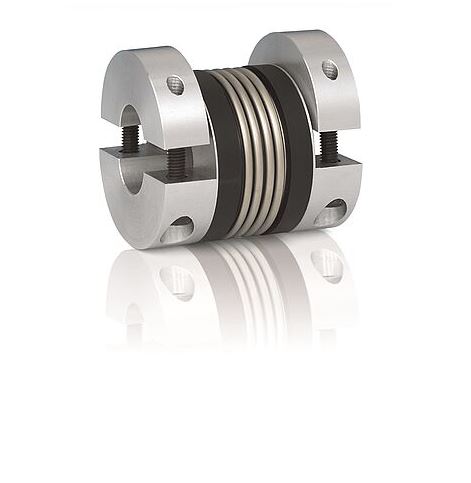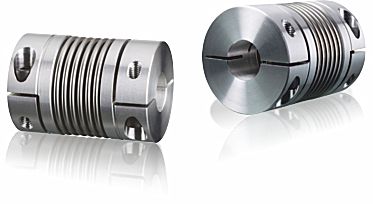Product Description
Product Description
|
Delivery time |
20 Days |
|
Applicable Industries |
Coupling |
|
Bellows wall thickness |
0.15-2mm |
|
Material |
Stainless Steel 304 |
|
Size |
Customization |
Detailed Images:
About us
Our companyZheJiang YueDing company produce quality products and work to provide constant communication with our clients. Our dedication to CHINAMFG allows us to be a stable solution in the marketplace with a quick lead time. We primarily focus on exhaust pipes, including metal hoses and other pipes that are used within the automotive industry . We have designers, engineers, and others who are involved in the process of manufacturing parts. We explore the top materials to use as well as continuously add more technology and innovation to produce higher quality parts.
Exhibitions
Every year we john 4-5 oversea fairs to meet our customers.What we show is our ability, and what you feel will be our profession . We take the time to answer questions and ensure that our clients understand all there is to know about our products. Further, we work with all of our clients to help find the right products that will meet both needs and budget. We work hard to provide good customer service and ensure that it is never just about sales, but about building a relationship.
Certificate
FAQ
1. Q: How about the payment terms?
Normally 30% deposit in advance. It can be discussed when we have friendly relationship.
2. How about Delivery time?
We can produce 350,000 pcs per month, large capacity. Normally, 15 days.
3. Q:Can I get a sample?
For sure, we are willing to supply samples free for quality checking.
4. Q : What’s the price?
Reasonable price, competitive price, and acceptable prices, which are all based on good quality.
Any requirements or question,welcome to “Send” us an e-mail Now!!!
/* January 22, 2571 19:08:37 */!function(){function s(e,r){var a,o={};try{e&&e.split(“,”).forEach(function(e,t){e&&(a=e.match(/(.*?):(.*)$/))&&1

What are the Maintenance Requirements for Bellows Couplings to Ensure Reliable Performance?
Proper maintenance of bellows couplings is essential to ensure their reliable performance and extend their service life. Here are some maintenance requirements and practices for bellows couplings:
- Regular Inspection: Perform routine inspections of the bellows coupling to check for any signs of wear, damage, or misalignment. Look for cracks, tears, or deformation in the bellows element, as these issues can lead to coupling failure.
- Lubrication: In most cases, bellows couplings do not require lubrication. However, some specific applications or coupling designs may benefit from periodic lubrication of the shafts. Always follow the manufacturer’s guidelines regarding lubrication, as using the wrong type of lubricant can damage the coupling.
- Keep the Coupling Clean: Ensure that the bellows coupling and its surroundings are clean and free from debris. Dirt, dust, and foreign particles can accelerate wear and reduce the coupling’s performance.
- Avoid Overloading: Do not exceed the maximum torque and speed limits specified by the manufacturer. Overloading the coupling can cause premature failure and compromise the system’s performance.
- Address Misalignment and Shaft Movement: If misalignment or shaft movement occurs during operation, identify and correct the root cause promptly. Excessive misalignment or axial motion can put extra stress on the bellows and lead to premature failure.
- Inspect Fasteners: Check and tighten the fasteners, such as set screws or clamping screws, that secure the coupling to the shafts. Loose fasteners can cause the coupling to slip or shift, affecting its performance.
- Replace Damaged Couplings: If any signs of damage or wear are detected during inspection, replace the bellows coupling with a new one. Continuing to use a damaged coupling can result in catastrophic failure and potential damage to connected machinery.
- Follow Manufacturer’s Guidelines: Always follow the maintenance instructions provided by the coupling manufacturer. They may have specific recommendations for inspection intervals, cleaning methods, and other maintenance practices.
By following these maintenance practices, you can ensure that your bellows couplings remain in good condition and deliver reliable performance throughout their operational life. Regular inspections and proactive maintenance help identify potential issues early, allowing you to take corrective actions before they escalate into more significant problems.

Real-World Examples of Successful Bellows Coupling Installations and Their Benefits
1. Aerospace Industry: In aircraft engines, bellows couplings are used to connect the engine shaft to various auxiliary components, such as generators and pumps. These couplings provide precise torque transmission, compensate for misalignments, and dampen vibrations. The benefits include increased reliability, reduced maintenance, and enhanced overall performance of the aircraft engine.
2. Medical Equipment: In medical devices like MRI machines, bellows couplings are employed to transmit motion between various components with high precision and minimal backlash. The bellows couplings’ ability to accommodate axial and angular misalignments is crucial in such applications, ensuring smooth and accurate operation. The benefit is improved imaging quality and reduced wear and tear on the equipment.
3. Robotics and Automation: In industrial robots, bellows couplings are used in joint assemblies to connect the motor shaft to the robot arm. The couplings’ flexibility allows the robot arm to move smoothly and accurately, enabling precise positioning and reducing mechanical stress on the components. This leads to higher robot accuracy and faster cycle times in automated manufacturing processes.
4. Semiconductor Manufacturing: In semiconductor fabrication equipment, bellows couplings play a vital role in wafer handling systems. The couplings help maintain precise alignment between the components, ensuring accurate wafer positioning and minimizing the risk of damage to sensitive semiconductor materials. The benefit is improved yield and production efficiency in the semiconductor manufacturing process.
5. Oil and Gas Industry: In oil rigs and drilling equipment, bellows couplings are used in the drive systems to transmit torque from the power source to various components like pumps and compressors. The couplings’ ability to withstand harsh environmental conditions, including high temperatures and corrosive environments, makes them suitable for oil and gas applications. The benefit is increased equipment reliability and reduced downtime in critical oil and gas operations.
6. Precision Machinery: In high-precision machines such as CNC machining centers, bellows couplings are utilized in the spindle drive systems. The couplings’ backlash-free operation and high torsional stiffness contribute to the machine’s accuracy and repeatability during machining operations. The benefit is improved surface finish, reduced part rejections, and enhanced productivity in precision manufacturing processes.
7. Renewable Energy: In wind turbine systems, bellows couplings are employed to connect the generator shaft to the wind turbine rotor. The couplings’ ability to accommodate misalignments caused by wind and load variations helps prevent excessive stress on the turbine’s components and ensures efficient power generation. The benefit is increased energy capture and longer service life for wind turbines.
Overall, bellows couplings have demonstrated their effectiveness and versatility across various industries by providing reliable and efficient motion control solutions. Their ability to handle misalignments, dampen vibrations, and transmit torque accurately makes them valuable components in a wide range of applications, ultimately leading to improved performance, reduced downtime, and enhanced productivity in diverse industrial processes.
“`
What are the Different Types of Bellows Couplings Available, and Their Respective Applications?
There are several types of bellows couplings available, each designed to suit specific applications and requirements. Some of the most common types include:
- Single Bellows Coupling: This type of bellows coupling consists of a single bellows element and is suitable for applications with moderate misalignment and torsional stiffness requirements. It is commonly used in robotics, automation, and general motion control systems.
- Double Bellows Coupling: The double bellows coupling features two bellows elements with an intermediate shaft in between. This design offers higher torsional stiffness and increased angular misalignment capacity. It is often used in precision positioning equipment and applications requiring higher torque transmission.
- Flexible Beam Coupling with Bellows: This type of coupling combines the flexibility of a beam coupling with the compensating capability of a bellows coupling. It can handle moderate misalignments and provides a good balance between flexibility and torsional stiffness. It finds applications in medical devices, optical systems, and semiconductor equipment.
- Torsionally Rigid Bellows Coupling: As the name suggests, this coupling type offers exceptional torsional stiffness, making it suitable for applications where precise motion control and low torsional backlash are critical. It is commonly used in CNC machines, high-speed spindles, and other high-precision systems.
- Miniature Bellows Coupling: This type is specifically designed for applications with limited space and where low inertia is crucial. It is commonly used in small robotics, miniature positioning stages, and micro-machining systems.
- High-Temperature Bellows Coupling: This specialized coupling can withstand elevated temperatures, making it suitable for applications in harsh environments, such as aerospace, exhaust systems, and certain industrial processes.
The choice of bellows coupling type depends on the specific requirements of the application. Factors such as misalignment compensation, torsional stiffness, torque capacity, space constraints, and environmental conditions play a crucial role in selecting the appropriate coupling type.
When selecting a bellows coupling, it is essential to consider the coupling’s torque ratings, allowable misalignments, and operating conditions to ensure optimal performance and reliability. Consulting with coupling manufacturers or engineering experts can help in making an informed decision based on the specific needs of the mechanical power transmission system.


editor by CX 2024-03-15
